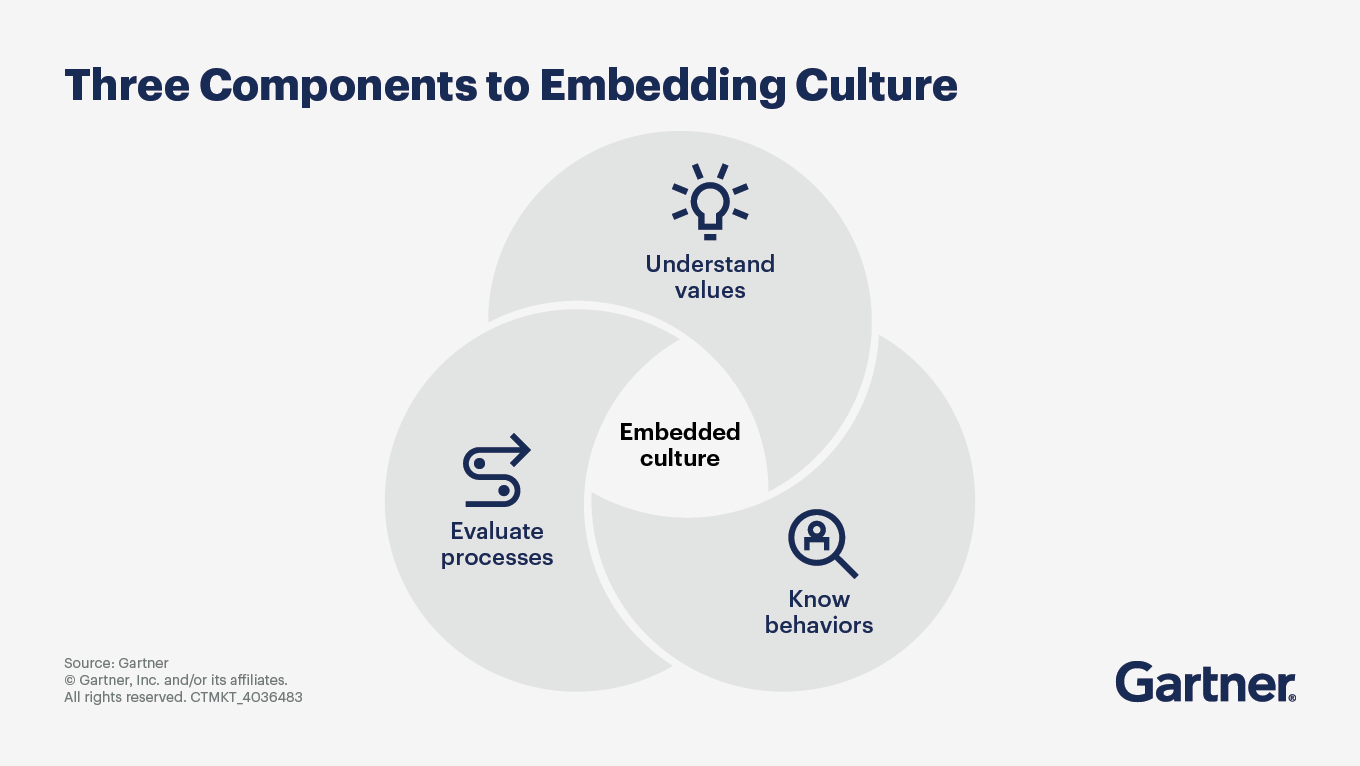Embed values into daily work to drive performance, engagement and lasting cultural change.
- Gartner client? Log in for personalized search results.
Drive change toward the culture you want
Fostering culture is a top priority for CHROs heading into 2026, but nearly one in three admit they’re unsure how to drive meaningful change. The challenge? Making organizational culture real — not just aspirational.
Gartner insights show that organizations embedding culture into employees’ daily work see up to a 34% boost in performance and a 63% increase in engagement. To achieve this, CHROs must move beyond slogans and surveys to make values visible in everyday actions and decisions.
Three steps to actually make culture stick
When employees understand company values — and see them consistently reflected — they’re more likely to act in alignment. Yet only 48% of employees feel personally connected to their organization’s values.
To embed culture for lasting impact, CHROs must take three practical steps: Meet employees where they are, define what values look like in action and reinforce those values through business processes.
Step 1: Differentiate values proficiency levels
Not all employees start with the same understanding of company values. Gartner finds fewer than half know what drives their organization’s culture. That’s why CHROs must diagnose proficiency gaps and tailor support to meet employees where they are.
By segmenting employees based on their comfort and familiarity with values, HR can provide targeted resources that build confidence and clarity. This approach helps employees grow from learning to living — and eventually leading — the culture.
Step 2: Specify do’s and don’ts for actionable behaviors
Values must translate into clear, everyday actions. Only 49% of employees know which behaviors actually align with the desired culture. Without guidance, even well-intentioned employees may struggle to act accordingly.
CHROs should define what “good” looks like — and doesn’t — to remove ambiguity. By clarifying behaviors that reflect each value, HR empowers teams to act with confidence and consistency in their day-to-day work.
Step 3: Reinforce values in business processes
Culture isn’t just about people — it lives (or dies) within business processes. Yet only 40% of employees feel their workflows support organizational values, and 43% of HR teams report misaligned systems.
To embed culture systemically, HR must identify “culture catalysts” that enable desired behaviors and “culture collisions” that undermine them. Adjusting processes to reinforce values ensures that culture is sustained — not just stated.
FAQs on embedding culture
What does it mean to embed culture into daily work?
Embedding culture means making company values and behaviors part of employees’ everyday tasks, decisions and interactions. When culture is reflected in business processes, employees can see those values in action and reinforce them through their work.
What are “culture catalysts” and “culture collisions”?
Culture catalysts are elements that support the desired culture — like team-based goals that promote collaboration. Culture collisions are factors that work against it — such as outdated tools that hinder communication. Identifying both helps HR know where to invest.
Why is it important to define behaviors for each company value?
Values can feel abstract. Defining specific behaviors helps employees understand what those values look like in action — and what to avoid. This clarity removes guesswork and builds confidence in demonstrating the desired culture.
Attend a Conference
Join Gartner experts and your peers to accelerate growth
Gather alongside your peers in Orlando to gain insight on emerging trends, receive one-on-one guidance from a Gartner expert and create a strategy to tackle your priorities head-on.
Gartner HR Symposium/Xpo™
Orlando, FL

Drive stronger performance on your mission-critical priorities.
